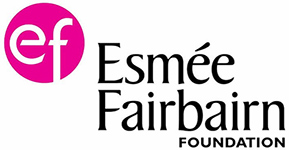
Hello again!
Wow, November went fast! For me this month has all been about continuing to learn and starting to share information about my project.
Now that the frosts have arrived, it’s been a much quieter time mollusc wise. The larger more noticeable species such as the Garden Snail (Cornu aspersum) have started aestivating – going dormant for the cold winter months. This is done by retracting into their shells and forming a temporary cover over the shell opening. The cover is made of mucus which dries, forming a hard epiphragm and leaving a small hole for air. Winter is also a great time for me to hide away in the lab/office. But instead of going dormant, I’ve been working hard on my identification skills, compiling my results and sharing them.
Conchological Society
National Museum Cardiff hosted the regional meeting of the Conchological Society of Great Britain and Ireland on the 19th November. This Conchological Society promotes the understanding, identification, recording and conservation of molluscs. Meeting members of the society and presenting my work to them was a fantastic opportunity. Presenting to such an experienced audience was nerve wracking. Nerves proved unfounded though, as they were such a lovely crowd. I have since been asked to write an article for their magazine “Mollusc World“, so clearly they must have enjoyed it!
Molluscan Researchers
Last week I joined Anna and Harriet, some of the molluscan curators here at National Museum Cardiff, in a day trip up to the National History Museum, London. The Malacological Society of London had organised the “molluscan forum”, which we attended. This international society is based in London promoting the advancement of research and education on molluscs. We took some posters with us about the various bits of research at the museum, including one on my project.
The event was well attended by a range of international students and researchers. Not only did I get to share my project with the people attending, but I also got to learn a massive amount from other peoples research. Facts like some snails can pass through a birds gut and live to tell the tale!
Emergencies and First Aid
In my spare time I volunteer for the British Red Cross. Recently I decided to become a Emergency Response volunteer, undertaking a three day training course to learn essential skills for this. A fascinating and fun experience! I learnt loads of transferable skills, such as the CALMER approach. This type of Psychosocial support assists people in crisis, which could be anything from losing a beloved pet to being flooded out of a home. It also has many applications in everyday life and work.
We also learnt how to push someone in a wheelchair, including getting them up and down kerbs safely. Taking it in turns to sit in the wheelchair and be pushed around was very enlightening! It made me realise just how vulnerable you can feel in one. Other skills covered were Everyday First Aid – dealing with burns, seizures, ingestion of poisons, choking, performing CPR, learning how to use an AED and much more. I really enjoyed learning these essential skills and hope to expand on them. Fingers crossed I won’t need to use any lifesaving ones at work anytime soon!
Finishing on some great news…
Esmee Fairburn, National Museum Wales & TCV have all agreed to extend my Natural Talent traineeship by an extra month! I’m absolutely delighted. I now have more time to tie up loose ends, work on sharing my findings far and wide, and produce some useful resources.
I’ve also been working on a blog post for youth conservation movement A Focus on Nature as part of their advent series. Keep an eye on their blog throughout December for some great posts on “the gift of inspiration” and find out who inspires 16-30 year old nature conservationists in the UK.
Until next time!
Hwyl fawr am nawr!
Imogen Cavadino
Natural Talent Trainee: Non-Marine Molluscs
Don’t forget you can keep up to date with my daily antics on Twitter here or here.
A massive thank you to the Esmée Fairbairn Foundation for funding this amazing programme. Find out more about them here.
Also to Amgueddfa Cymru – National Museum Wales for hosting my placement. Be sure to drop in for a visit to the public collections when you’re in Cardiff!




